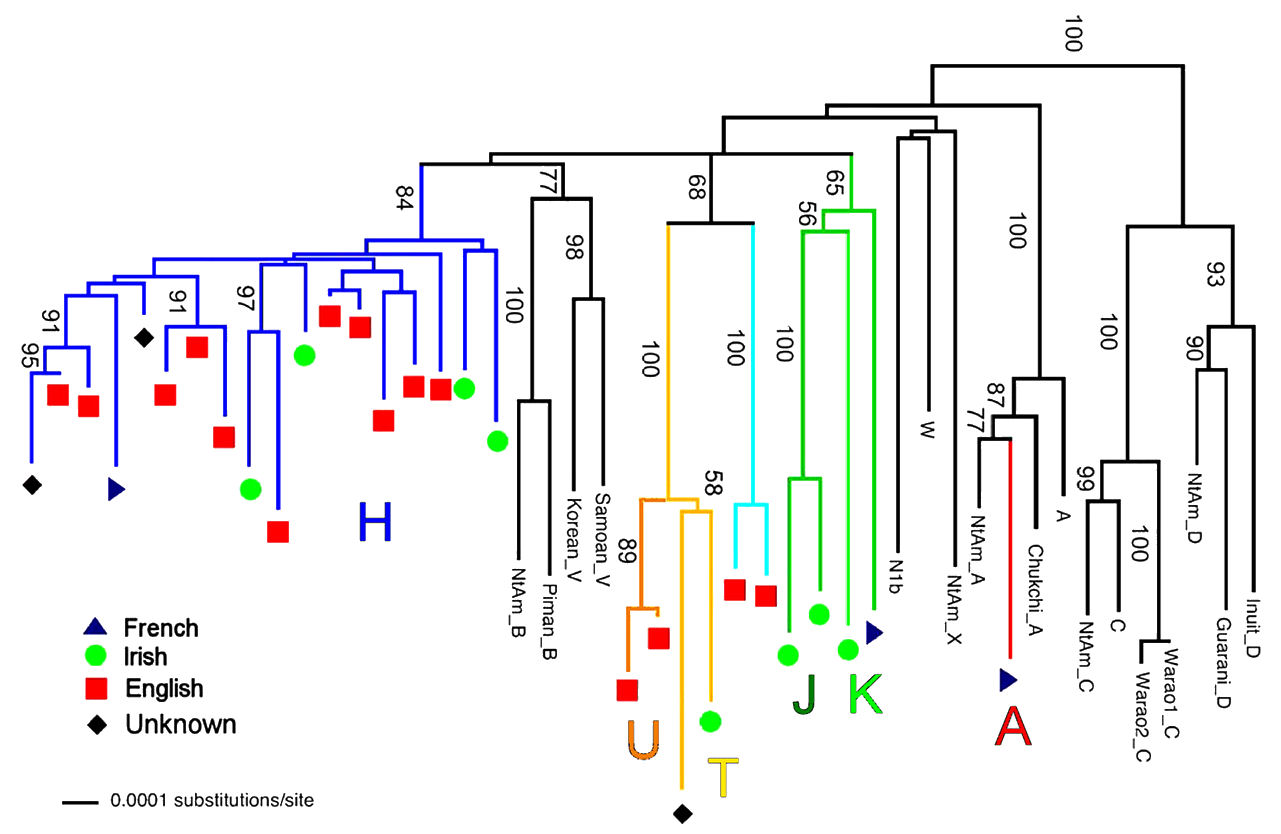
The "Daughters of Eve" in Newfoundland
(AM Pope, SM Carr et al. 2011. Genome, 54,110-119.; SM Carr et al. 2008 Comp Biochem Physiol D Genomics & Proteomics, 3,1-11)
The island of Newfoundland
was originally the oldest of England's overseas colonies,
and was colonized in the 17~18th centuries by small numbers of
families, primarily from the West Country of England and
southeastern Ireland, with a smaller minority from France.
Until the last several generations, settlement occurred mainly
in many small coastal communities ("Outports").
Geographic
isolation and religious segregation of (mainly Catholic) Irish
and (mainly Protestant) English families limited genetic
exchange among these settlements. The phenomenon of "Inbreeding in Outports"
(The Muse, March 01, 2007) and accompanying genetic
drift in small populations has led to expectations of loss of
genetic diversity within the Newfoundland population.
Analysis of complete mitochondrial DNA (mtDNA) genomes from matrilineal descendants of these founders shows instead high levels of genetic diversity, including descendants of five of the seven "Daughters of Eve." These are major 'haplogroups' identified by DNA sequencing of the major hypervariable regions in the mtDNA molecule. In our study, every individual sequenced has a unique mtDNA sequence. The majority of individuals occur in the most common western European Haplogroup "H", but distinct lineages of English, Irish, and French Newfoundlanders occur within four of the five other haplogroups ("J" &"T", and "U" & "K", respectively). Descendants of the other two, rarer European daughters "X" &"V" have not yet been found in Newfoundland. Another Newfoundlander of French descendant occurs in the genetically distinct Haplogroup "A", which is found in First Nations groups but is otherwise unknown in persons of European descent. This individual appears to be the maternal descendant of a Mi'kmaq mother and a French father. The extinct Beothuk of Newfoundland are known to include two North American lineages, C and X.
Analysis of complete mitochondrial DNA (mtDNA) genomes from matrilineal descendants of these founders shows instead high levels of genetic diversity, including descendants of five of the seven "Daughters of Eve." These are major 'haplogroups' identified by DNA sequencing of the major hypervariable regions in the mtDNA molecule. In our study, every individual sequenced has a unique mtDNA sequence. The majority of individuals occur in the most common western European Haplogroup "H", but distinct lineages of English, Irish, and French Newfoundlanders occur within four of the five other haplogroups ("J" &"T", and "U" & "K", respectively). Descendants of the other two, rarer European daughters "X" &"V" have not yet been found in Newfoundland. Another Newfoundlander of French descendant occurs in the genetically distinct Haplogroup "A", which is found in First Nations groups but is otherwise unknown in persons of European descent. This individual appears to be the maternal descendant of a Mi'kmaq mother and a French father. The extinct Beothuk of Newfoundland are known to include two North American lineages, C and X.